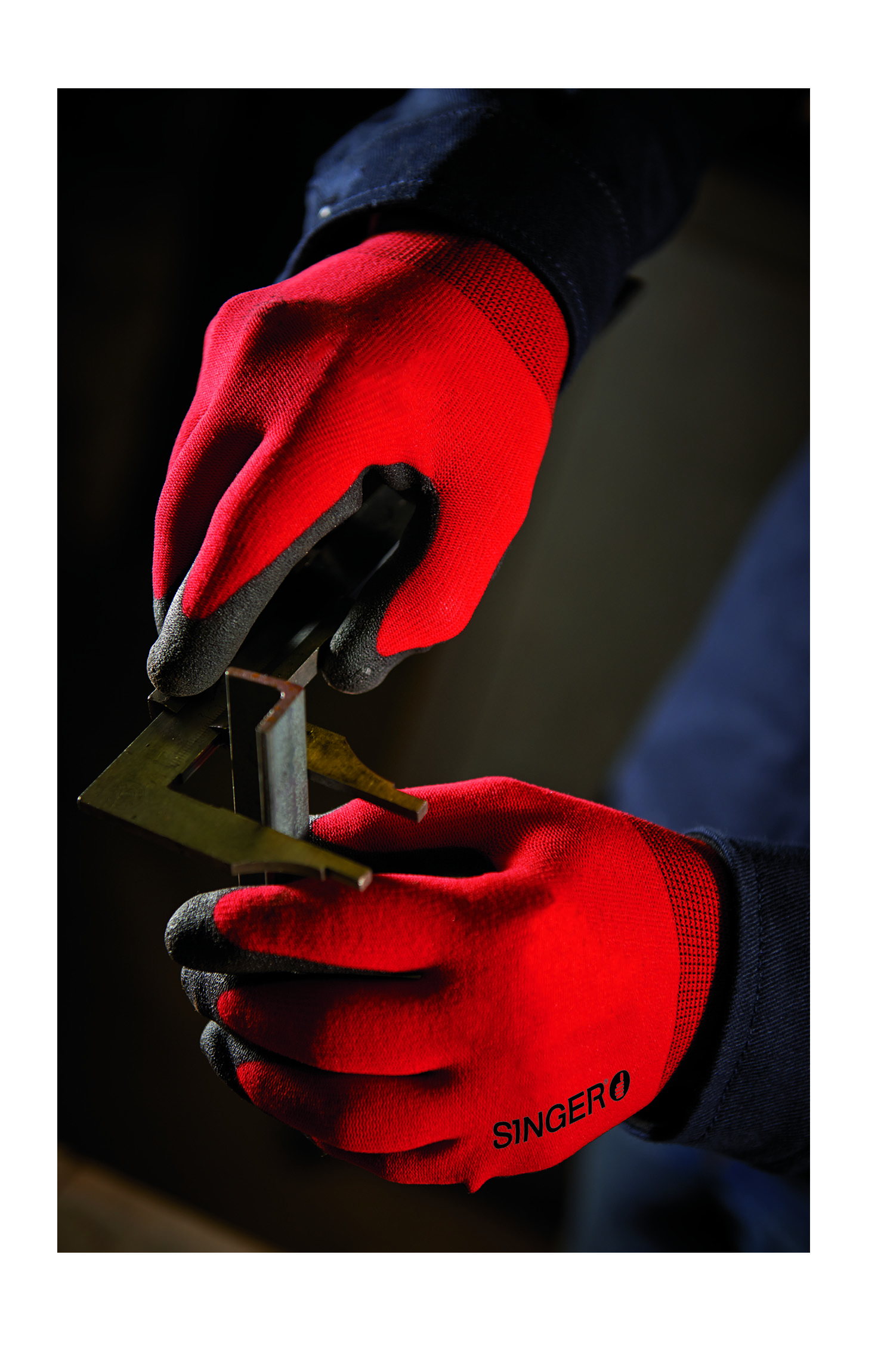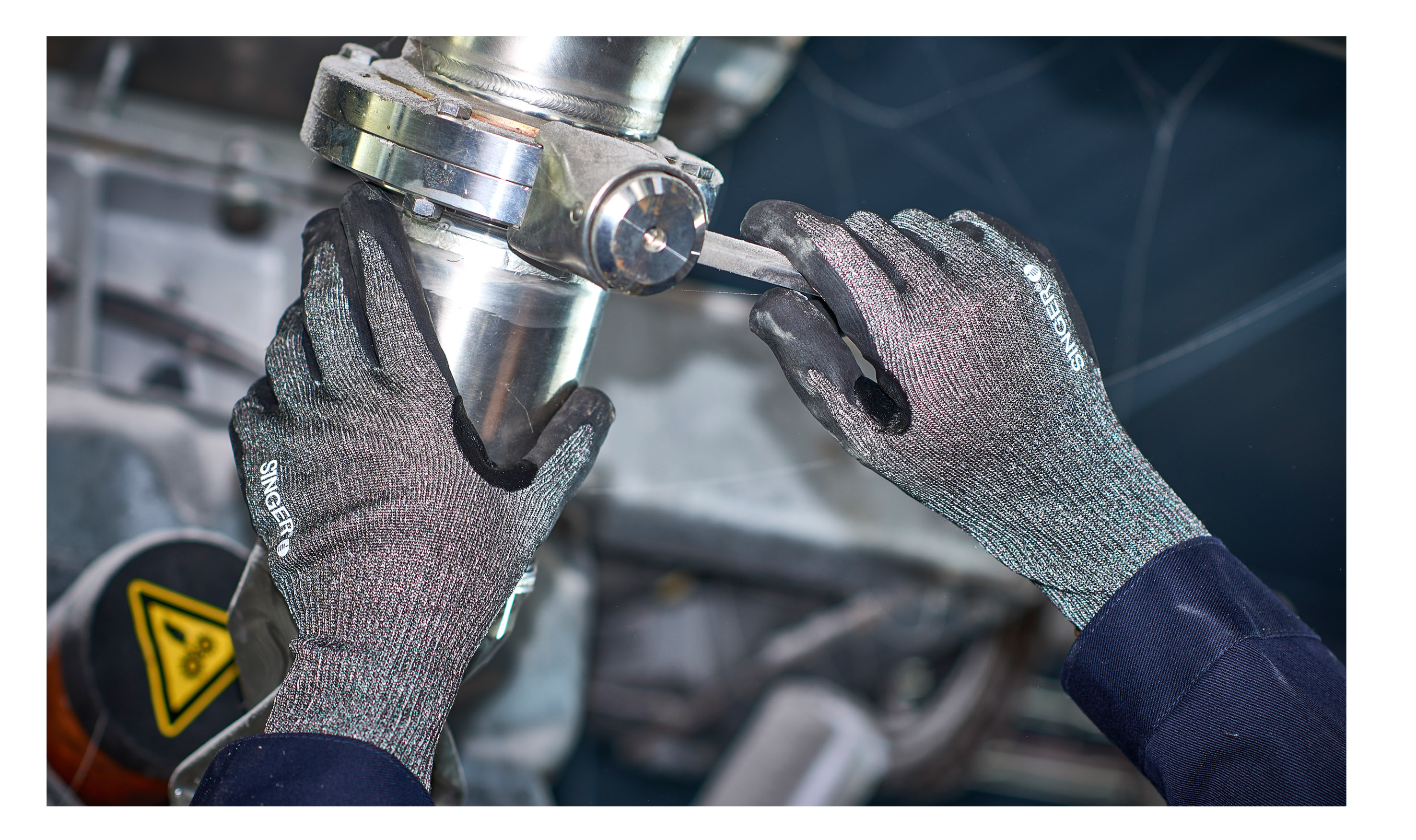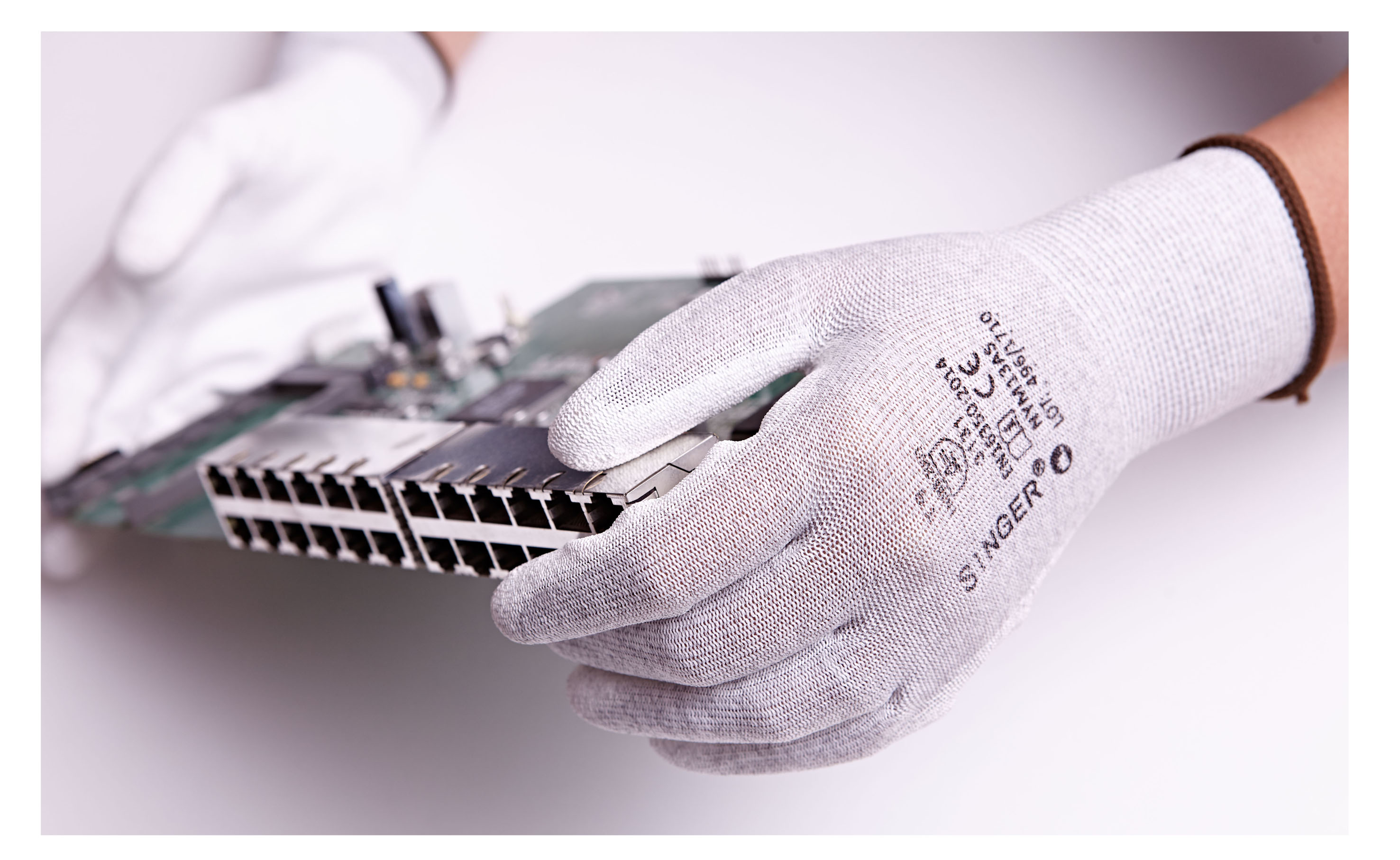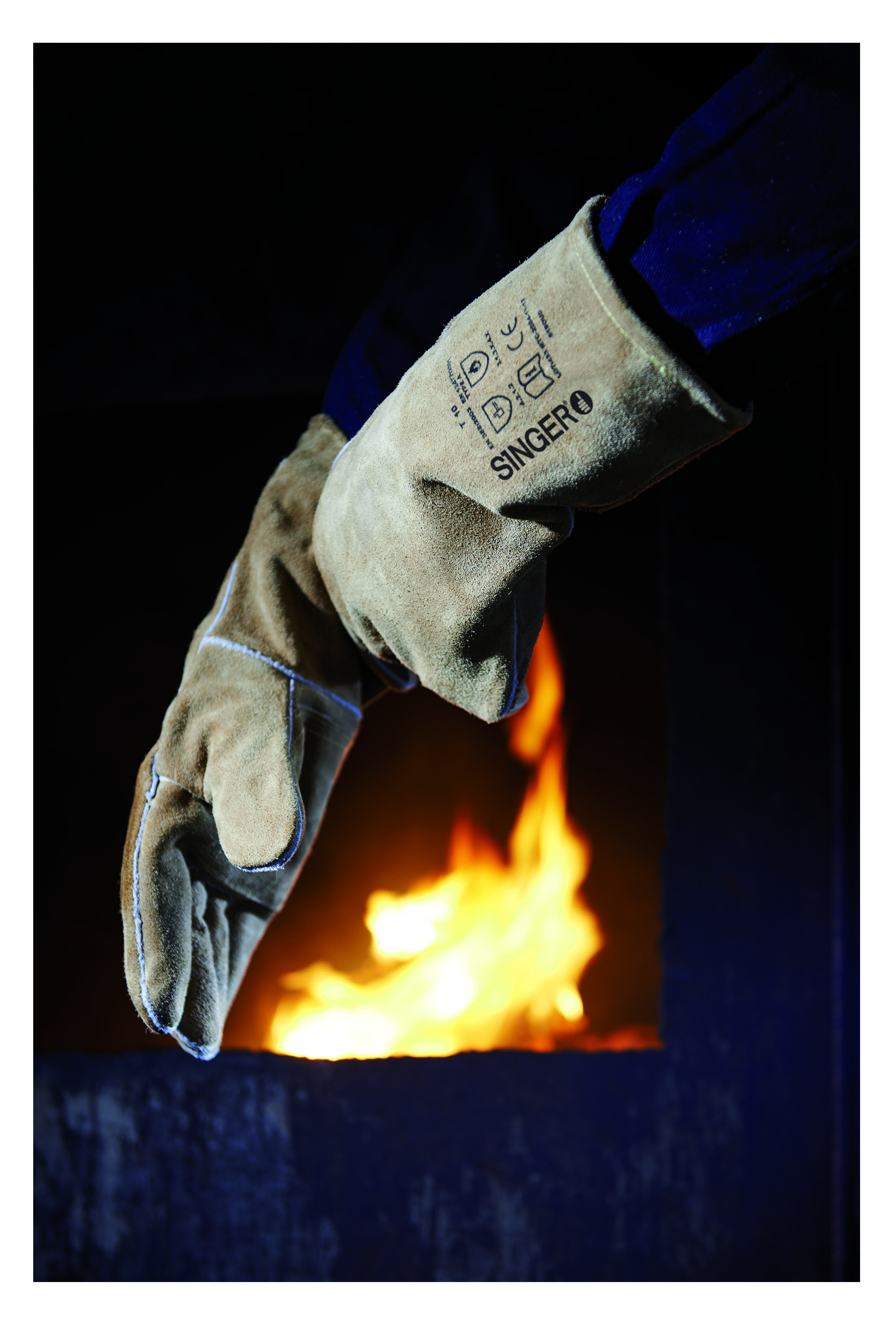Loading 








The selection of a safety glove ; how to choose ?
 |
Choosing a protective glove is a difficult but essential exercise. This always remains a form of compromise between different criteria: the protection provided, the one you are looking for, the comfort of the equipment, the price to pay and many other factors. |
|
Still, the most important thing is to make sure that the glove is actually worn. However, it is still necessary to ensure that the equipment selected does not bring more disadvantages than advantages! We must also ensure that it is not completely unsuited to the risk encountered. The worst situation would be that the user believes he is protected by unsuitable equipment. This can lead to dangerous risk taking. For example, a glove certified to standard EN 374 (chemical risk) does not mean that the product is resistant to all chemicals or indefinitely over time. It is therefore essential to check in detail the actual protection provided by the model, in particular by reading the instructions enclosed with each product. Certain materials such as latex can cause allergies in certain sensitive users. In this case, other materials such as nitrile should be selected. Some unsuitable equipment could be caught in moving machinery. The protection provided  This is obviously a crucial point. The glove must meet the protection needs and be effective against the risks encountered in the workplace. These are numerous and can be combined: - mechanical risks (abrasion, cut, tear, puncture) - thermal risks (cold, hot, burns, etc.) - chemical risks - electrical hazards - biological risks etc Note that it is sometimes better to select a model with lower performance but providing better comfort, better dexterity; these latter advantages will thus make it possible to limit fatigue at work and the possible appearance of new risks. A glove, certainly very resistant to heat for example, could prove to be too thick; its use could risk causing accidents due to lack of dexterity. It should be remembered here that risk analysis is a complex process. All collective protection solutions must first be considered. There is a risk scale; a protective glove for simple handling (minor risks) does not involve the same constraints as a glove that will have to protect against very aggressive chemicals (irreversible or even fatal risks). Some materials provide better resistance than others against certain risks and will therefore be preferred when choosing equipment.  The standards make it possible to evaluate the level of resistance of gloves according to certain criteria/risks. However, these tests are carried out under laboratory conditions and should only be an additional element in the choice of equipment. In addition, flaws have sometimes been demonstrated in certain test methods or differences in results for the same product depending on the laboratory. An evaluation of the equipment in a real situation therefore remains essential to validate or invalidate an equipment. However, be careful not to put the safety or health of a user at risk during these evaluations. Comfort/ Breathability Each user has a different feeling. A seamless knitted glove avoids the development of redness and injuries that can sometimes be caused by other so-called "cut and sewn" models, which are sometimes poorly designed or poorly made.  A comfortable glove will increase the user's acceptance of wearing the equipment. A glove that suits one user will not necessarily suit another. A comfortable glove will increase the user's acceptance of wearing the equipment. A glove that suits one user will not necessarily suit another.An economical but uncomfortable glove may not be worn. A fully coated glove will provide better protection but will not let the hand breathe much. It will then be advisable in this case to take more frequent breaks during which one will let the hands breathe in the open air. A 3/4 coated glove (ie the palm and half of the back covered by the coating) may be another solution to consider. Leather is a natural material that allows the hand to breathe better than a synthetic material. In all cases and for obvious hygiene reasons, a glove must remain the property of a single user. In case of perspiration, you should change your equipment more regularly, wash the glove inside out, if the model allows it, and let it dry naturally, away from any source of heat. Dexterity / Sizes A seamless knitted glove, unlike so-called cut/sewn gloves, generally provides better dexterity. Indeed the knit (which can sometimes have a complement of elastane thread) allows a better elasticity than a fabric. It adapts better to the contours of the hand, allowing the user better dexterity. Choosing a size adapted to the hand increases comfort and dexterity while reducing the risks during handling.  After putting on the glove by passing your hand through the wrist or the cuff, it should be ensured that the equipment fits ideally and comfortably to the contours of the hand. The fingers of the glove should neither be too long nor too short. The equipment should neither be too loose nor too tight. Otherwise, try another size or another model. Do not work with equipment that is not suitable for your hand. In the event of joint use with other forms of PPE, ensure that they are compatible and that the assembly does not hinder your activity or your safety. To deal with certain risks (projections of molten metals for example) it is advisable to ensure that the glove can be removed quickly thanks for example to a flared cuff. When you work do not wear jewelry, such as rings or bracelets. Not only can they hinder the good adaptability of the equipment to your hand and the wearing comfort, but they can also cause additional risks Tests The choice of a glove must also be made in situ by the users who will be required to wear the equipment and must therefore assess its performance and comfort in relation to the work carried out and the risk(s) encountered. ). A glove accepted by the user will facilitate effective wearing. The right price Obviously the price is an essential factor during the act of purchase. However, designing a purchase of protective gloves solely by price could prove to be particularly dangerous. A cheap glove is often synonymous with poor quality, low reliability and limited protection. It is often better to buy slightly more expensive gloves, which will last longer, protect better and provide more comfort; consumption will therefore be lower for a total cost which may also prove to be more competitive. It is therefore very often in the end a winning choice. Branding Not all products are produced professionally or in compliance with all ethical (social) or environmental rules. Singer Safety® gives great importance to respect for people and the environment. We also favor our production according to the ability of our partners to respect our values and to have, if necessary, certifications to provide proof of this; otherwise we carry out our own checks in order to validate our productions according to strict criteria: no child labor, compliance with the social rules in force... In summary, choosing a protective glove is not easy. There is no universal glove that could respond to all risks at the same time, provide exceptional comfort while guaranteeing great dexterity and an unbeatable price. However, it is essential to protect yourself against the many risks that employees face every day. Singer Safety® can bring its know-how and expertise to users in collaboration with its distributor customers in order to find suitable equipment. Thanks to their technical expertise, our advisers can help you study and select the product best suited to your needs. Any reproduction of this document is prohibited without the written consent of Singer Frères. This information is provided for information only and does not engage the responsibility of Singer Frères. Exclusive sale to professional distributors Issue 2021/2 |